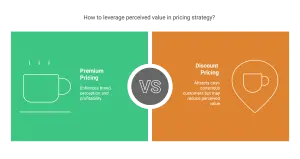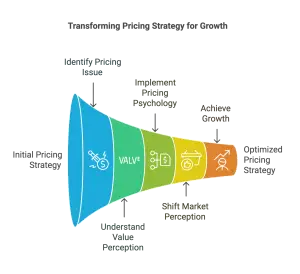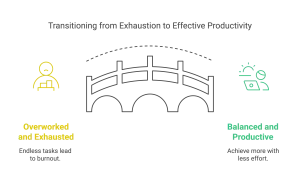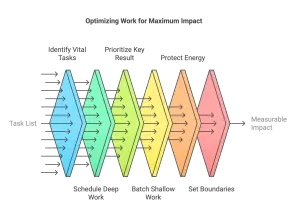Eisenhower Matrix Time Management, also known as the Urgent-Important Matrix, is a powerful tool for prioritizing tasks and managing time effectively. This time management technique is named after Dwight D. Eisenhower, the 34th president of the United States, who was known for his exceptional ability to make tough decisions and manage his time efficiently. It was popularized by Stephen Covey, a renowned productivity expert, in his book “The 7 Habits of Highly Effective People.”
Table of contents
- Key Takeaways
- What is the Eisenhower Matrix Time Management?
- How Does the Eisenhower Matrix Work?
- Why is the Eisenhower Matrix Effective for Time Management?
- How to Prioritize Tasks Using the Eisenhower Matrix?
- What are the Common Mistakes When Using the Eisenhower Matrix?
- How to Incorporate the Eisenhower Matrix into Daily Life?
- Real-life Examples of Using the Eisenhower Matrix
- Frequently Asked Questions
- What is the Eisenhower Matrix and how does it relate to time management?
- How does the Eisenhower Matrix work as a decision making tool?
- What is the first step in using the Eisenhower Matrix for task prioritization?
- How can the Eisenhower Matrix help individuals in the workplace?
- What is the difference between a reactive mindset and a responsive mindset when it comes to time management?
- How can the Eisenhower Matrix be used to handle an urgent client request?
Key Takeaways
- Prioritizing tasks can be made simpler with the Eisenhower Matrix, a time management tool created by President Dwight D. Eisenhower and popularized by author Stephen Covey.
- The matrix divides tasks into four quadrants based on urgency and importance, helping individuals focus on what is truly important and avoid procrastination.
- Use the Eisenhower Matrix to increase productivity, manage personal and professional time more effectively, and avoid common mistakes such as including non-important tasks and falling into the trap of procrastination.
The concept of the Eisenhower Matrix is simple – it helps individuals and teams prioritize tasks by urgency and importance, allowing them to focus on the most critical and valuable activities. It is a decision-making framework that can be applied to both personal and professional life, helping individuals achieve their goals and improve their productivity.
To understand how the Eisenhower Matrix works, it is essential to know its creator, Dwight Eisenhower, and the productivity expert who popularized it, Stephen Covey. Eisenhower was a five-star general in the US Army and served as the Supreme Allied Commander during World War II. He was known for his ability to make tough decisions and manage time effectively, earning him the nickname “The Man Who Managed Time.” Stephen Covey, on the other hand, was a renowned author, educator, and speaker, best known for his book “The 7 Habits of Highly Effective People.” He introduced the Eisenhower Matrix as a time management tool in the 1994 edition of his book.
Decoding the Eisenhower Matrix: Transforming Decision-Making and Productivity
To use the Eisenhower Matrix for time management, individuals need to start by listing all their tasks on a piece of paper or a to-do list. Next, they need to evaluate each task and place them in the appropriate quadrant based on their urgency and importance. This allows individuals to focus on tasks that are important and urgent, while delegating or eliminating tasks that are not essential to their goals.
The Eisenhower Matrix is an effective time management tool because it helps individuals prioritize their tasks and focus on the ones that align with their long-term goals and core values. By doing so, individuals can avoid wasting time on unimportant tasks and stay in a proactive mode instead of a reactive one. It also helps individuals avoid the common time wasters and improve their personal productivity. The matrix also encourages individuals to schedule time for tasks in advance, allowing them to plan and prepare for any time crunch that may arise.
To use the Eisenhower Matrix, first consider each task’s urgency and importance. Urgent items have deadlines or need immediate attention. Conversely, important tasks align with long-term goals and impact life significantly. In the matrix, prioritize tasks from Quadrant 1 to 4. Quadrant 1 has the highest priority, and Quadrant 4 the lowest. This method lets individuals focus on critical tasks first. Then, they address important tasks. Finally, they tackle less important tasks if time allows.
A common mistake in using the Eisenhower Matrix is misplacing tasks. Often, these are personal tasks, maintenance projects, or time-sensitive tasks. These do not align with long-term goals. To avoid this, separate personal from professional tasks. Create different matrixes for each. This approach ensures focus on tasks that align with goals and values.
What is the Eisenhower Matrix Time Management?
The Eisenhower Matrix, also known as the Urgent-Important Matrix, is a time management tool created by former US President Dwight D. Eisenhower. Its purpose is to help individuals prioritize tasks based on their urgency and importance. Eisenhower famously stated, “What is important is seldom urgent, and what is urgent is seldom important.”
The matrix divides tasks into four quadrants:
- urgent and important
- important but not urgent
- urgent but not important
- not urgent or important
This allows individuals to focus on tasks that truly matter and avoid wasting time on unimportant or non-urgent activities.
Who is Dwight D. Eisenhower?
Dwight D. Eisenhower was the 34th President of the United States, serving from 1953 to 1961. Born on October 14, 1890, in Denison, Texas, Eisenhower was a highly respected military leader before his presidency. He played a significant role in World War II as the Supreme Commander of the Allied Expeditionary Force in Europe. Eisenhower’s leadership skills and strategic thinking abilities were instrumental in the success of the D-Day invasion.
He is also known for his contributions to the development of the Eisenhower Matrix, a time management tool that helps individuals prioritize tasks and improve productivity.
To understand who Dwight D. Eisenhower is, it is important to know about his background and accomplishments. Eisenhower was a highly respected military leader and played a crucial role in World War II. After his presidency, he continued to make contributions to society through the development of the Eisenhower Matrix, a powerful tool for time management. By using this tool, individuals can effectively prioritize tasks and increase productivity. It is recommended to use the Eisenhower Matrix for both personal and professional time management and to regularly review and update tasks for optimal efficiency. Embrace this powerful tool and reap the benefits of improved time management.
Who is Stephen Covey?
Stephen Covey was a well-known author, speaker, and educator who was highly influential in the areas of personal and organizational effectiveness. He gained widespread recognition for his book “The 7 Habits of Highly Effective People,” which has been purchased by over 25 million people globally.
Covey’s teachings centered around principles of character, prioritization, and personal growth. He believed that individuals should prioritize developing their character and aligning their actions with their values. Covey’s work has had a profound impact on personal development and time management, and his ideas are frequently referenced in discussions on productivity and effectiveness.
To incorporate Covey’s teachings, it is important to prioritize tasks based on their importance and urgency, use the Eisenhower Matrix, and focus on proactive habits. Keep in mind that personal growth is a continuous journey, and applying Covey’s principles can lead to increased effectiveness and fulfillment.
How Does the Eisenhower Matrix Work?
The Eisenhower Matrix is a powerful tool for effectively managing time and prioritizing tasks. Here is how it works:
- Create a list of all your tasks.
- Categorize tasks into four quadrants:
- Urgent and Important: These tasks should be done first.
- Important but not Urgent: Schedule these tasks for a later time.
- Urgent but not Important: Delegate these tasks to others.
- Not Urgent or Important: Eliminate or postpone these tasks.
- Focus on completing tasks in the Urgent and Important quadrant.
- Create a schedule for tasks in the Important but not Urgent quadrant.
- Delegate tasks in the Urgent but not Important quadrant to others.
- Eliminate or postpone tasks in the Not Urgent or Important quadrant.
By utilizing the Eisenhower Matrix, you can effectively prioritize your tasks and make the most of your time. Remember to regularly review and update your tasks in order to stay on track and maintain productivity.
What are the Four Quadrants of the Eisenhower Matrix?
The Eisenhower Matrix is a time management tool that helps prioritize tasks based on their urgency and importance. It is divided into four quadrants:
- Important and Urgent: These are tasks that require immediate attention and should be completed as soon as possible.
- Important but Not Urgent: These tasks are crucial for long-term goals and should be scheduled for a later time.
- Urgent but Not Important: These tasks are often distractions and can be delegated or eliminated.
- Not Urgent and Not Important: These tasks are time-wasters and should be avoided or minimized.
By organizing tasks into these quadrants, individuals can focus on important and urgent tasks, delegate or schedule important but not urgent tasks, and eliminate or minimize tasks that are not important. This helps increase productivity and effectively prioritize time.
How to Use the Eisenhower Matrix for Time Management?
- Begin by creating a list of all your tasks.
- Categorize each task into one of the four quadrants: urgent and important, important but not urgent, urgent but not important, not urgent and not important.
- Focus on completing tasks in the urgent and important quadrant first.
- Schedule specific time slots for tasks in the important but not urgent quadrant, to prevent them from becoming urgent later on.
- Delegate or eliminate tasks in the urgent but not important quadrant.
- Avoid tasks in the not urgent and not important quadrant to maximize productivity and minimize stress.
Using the Eisenhower Matrix for time management can greatly help in prioritizing tasks, increasing productivity, and reducing stress levels.
Because it’s the only matrix that can help you conquer both your to-do list and your procrastination habits.
Why is the Eisenhower Matrix Effective for Time Management?
The Eisenhower Matrix is an effective tool for time management due to its simple yet powerful framework for prioritizing tasks. It enables individuals to focus on what truly matters by categorizing tasks according to urgency and importance. By utilizing this matrix, one can easily identify and tackle high-priority tasks first, leading to reduced stress and increased productivity. This method promotes proactivity rather than reactivity, ensuring that important tasks are not neglected or postponed. The Eisenhower Matrix also provides a visual representation of tasks, aiding in better decision-making and efficient time management.
How Does the Eisenhower Matrix Help with Productivity?
The Eisenhower Matrix provides a systematic approach to task management that can greatly improve productivity. To use the matrix effectively, follow these steps:
- Identify tasks: Begin by making a list of all tasks that need to be accomplished.
- Categorize tasks: Next, divide tasks into four quadrants based on their urgency and importance.
- Quadrant 1: Give top priority to tasks that are urgent and important.
- Quadrant 2: Schedule and plan for tasks that are important but not urgent.
- Quadrant 3: Delegate or minimize tasks that are urgent but not important.
- Quadrant 4: Eliminate or avoid tasks that are not urgent and not important.
- Take action: Start with the most important and urgent tasks, then move on to tasks in the other quadrants.
- Review and adjust: Regularly review and update your task list to stay focused and effectively prioritize.
President Eisenhower famously utilized the matrix to manage his time during his presidency, enabling him to balance his responsibilities and increase his productivity.
What are the Benefits of Using the Eisenhower Matrix?
Using the Eisenhower Matrix for time management offers numerous benefits.
- Clear Prioritization: It helps individuals categorize tasks based on urgency and importance, allowing them to focus on what truly matters.
- Efficient Time Allocation: By identifying and prioritizing important tasks, individuals can allocate their time and energy effectively.
- Increased Productivity: The matrix aids in eliminating time-wasting activities and encourages individuals to proactively tackle important tasks.
- Reduced Stress: With a clear plan and prioritized tasks, individuals can reduce stress and feel more in control of their workload.
In a similar manner, President Eisenhower utilized the matrix to effectively manage his time, allowing him to balance his responsibilities as a leader and maintain a productive schedule.
Get your priorities straight with the Eisenhower Matrix – even President Eisenhower used it!
How to Prioritize Tasks Using the Eisenhower Matrix?
To effectively prioritize tasks using the Eisenhower Matrix, follow these steps:
- Start by listing all of your tasks or responsibilities.
- Categorize each task as either important or not important.
- Categorize each task as either urgent or not urgent.
- Based on these categorizations, place each task in the appropriate quadrant of the matrix.
- Begin by focusing on the tasks in the top-left quadrant (important and urgent).
- Delegate or schedule tasks in the top-right quadrant (important but not urgent).
- Consider eliminating or minimizing tasks in the bottom-left quadrant (not important and urgent).
- Avoid or limit tasks in the bottom-right quadrant (not important and not urgent).
- Regularly reassess and adjust your priorities as needed.
What are the Criteria for Prioritizing Tasks?
To effectively prioritize tasks using the Eisenhower Matrix, consider the following criteria:
- Importance: Determine the significance of each task and its impact on your goals and objectives.
- Urgency: Assess the time sensitivity of each task and identify those that require immediate attention.
- Complexity: Consider the level of difficulty or effort required for each task and prioritize accordingly.
- Deadlines: Take into account any specific deadlines or time constraints associated with each task.
By evaluating tasks based on these criteria, you can determine which ones should be prioritized and address them accordingly.
President Dwight D. Eisenhower famously utilized the Eisenhower Matrix to effectively manage his time during his presidency. By prioritizing tasks based on importance and urgency, he was able to focus on critical matters and make significant contributions to the development of the country. His strategic approach to time management serves as a testament to the effectiveness of the Eisenhower Matrix in real-life situations.
How to Use the Eisenhower Matrix to Prioritize Tasks?
- Make a list of all your tasks.
- Categorize each task into one of the four quadrants: Important and Urgent, Important but Not Urgent, Urgent but Not Important, and Not Urgent and Not Important.
- Prioritize tasks in the Important and Urgent quadrant, as they require immediate attention.
- Delegate or schedule tasks in the Important but Not Urgent quadrant for later completion.
- Eliminate or minimize tasks in the Urgent but Not Important quadrant to free up time.
- Avoid tasks in the Not Urgent and Not Important quadrant, as they do not contribute to your goals.
Fact: The Eisenhower Matrix is a popular time management tool named after former US President Dwight D. Eisenhower, who famously said, “What is important is seldom urgent, and what is urgent is seldom important.”
Don’t make the mistake of including Netflix binges in your Eisenhower Matrix, they’re not a priority.
What are the Common Mistakes When Using the Eisenhower Matrix?
When utilizing the Eisenhower Matrix for time management, it is crucial to avoid common mistakes in order to maximize its effectiveness. Some of these mistakes include:
- Failing to prioritize: It is important to assign tasks to their appropriate quadrant (urgent and important, not urgent but important, urgent but not important, not urgent and not important) in order to effectively allocate time.
- Procrastination: Delaying tasks in the important but not urgent quadrant can lead to increased stress and last-minute rushes.
- Overloading: Placing too many tasks in the urgent and important quadrant can result in feeling overwhelmed and unable to complete them all.
- Neglecting self-care: Not setting aside time for self-care activities in the not urgent and not important quadrant can lead to burnout and decreased productivity.
By recognizing and avoiding these common mistakes, the Eisenhower Matrix can be utilized effectively for efficient time management.
What are the Tasks That Should Not be Included in the Eisenhower Matrix?
Tasks that should not be included in the Eisenhower Matrix are those that are low priority or not urgent. These tasks typically include distractions, such as checking social media, watching TV, or browsing the internet aimlessly. These activities do not contribute to productivity or help in achieving important goals. It’s important to identify and eliminate tasks that are not aligned with your priorities or long-term objectives. By excluding these tasks from the Eisenhower Matrix, you can focus on what truly matters and make the most effective use of your time.
How to Avoid Procrastination When Using the Eisenhower Matrix?
To effectively avoid procrastination when using the Eisenhower Matrix for time management, follow these steps:
- Set clear goals and deadlines for each task.
- Prioritize tasks based on importance and urgency.
- Break down tasks into smaller, manageable steps.
- Create a schedule or timetable to allocate specific time slots for each task.
- Eliminate distractions and create a conducive work environment.
- Use tools like timers or productivity apps to stay focused and accountable.
- Maintain a positive mindset and stay motivated by rewarding yourself after completing tasks.
- Regularly review and adjust your task list and priorities to stay on track.
How to Incorporate the Eisenhower Matrix into Daily Life?
To effectively incorporate the Eisenhower Matrix into your daily life, follow these simple steps:
- Create a to-do list: Start by writing down all of your tasks and then categorize them into four quadrants based on their level of importance and urgency.
- Set priorities: Prioritize tasks in the Important and Urgent quadrant and focus on completing them first.
- Delegate or eliminate tasks: Identify any tasks that can be delegated to others or removed from your list altogether.
- Schedule tasks: Assign specific time slots for tasks in the Important but Not Urgent quadrant to ensure they get done.
Fact: By utilizing the Eisenhower Matrix, you can effectively prioritize your tasks and improve your time management skills.
How to Use the Eisenhower Matrix for Personal Time Management?
To effectively use the Eisenhower Matrix for personal time management, follow these steps:
- List all your tasks: Write down all the tasks you need to complete.
- Assign priorities: Evaluate each task’s importance and urgency, and assign them to the appropriate quadrant.
- Focus on Quadrant 1: Start with the tasks in Quadrant 1 (important and urgent) and complete them promptly.
- Schedule Quadrant 2 tasks: Allocate dedicated time for Quadrant 2 tasks (important but not urgent) to prevent them from becoming urgent later.
- Delegate or eliminate Quadrant 3 tasks: Assess if any tasks in Quadrant 3 (urgent but not important) can be delegated or eliminated.
- Avoid Quadrant 4 tasks: Minimize or eliminate tasks in Quadrant 4 (not important and not urgent) as they contribute the least to your goals.
By effectively using the Eisenhower Matrix, you can prioritize tasks, minimize procrastination, and focus on what truly matters.
Prioritize like a pro and conquer your to-do list with the power of the Eisenhower Matrix for professional time management.
How to Use the Eisenhower Matrix for Professional Time Management?
To effectively use the Eisenhower Matrix for professional time management, follow these steps:
- Create a comprehensive list of all your tasks and responsibilities.
- Categorize each task into one of the four quadrants: Urgent and important, important but not urgent, urgent but not important, neither urgent nor important.
- Prioritize completing tasks in the urgent and important quadrant first.
- Schedule dedicated time for important but not urgent tasks to prevent them from becoming urgent.
- Delegate tasks that are urgent but not important to others if possible.
- Eliminate tasks in the neither urgent nor important quadrant or find ways to minimize their impact on your time.
For instance, a busy executive successfully utilized the Eisenhower Matrix to manage their time. By prioritizing tasks and delegating non-essential ones, they were able to focus on important projects, increase productivity, and effectively achieve their goals.
See how people, including presidents, have mastered time management with the Eisenhower Matrix.
Real-life Examples of Using the Eisenhower Matrix
Using the Eisenhower Matrix for time management can greatly improve productivity and efficiency. Here are some real-life examples of how individuals have successfully utilized this method:
- Prioritization: A busy executive used the matrix to identify and focus on high-priority tasks, delegating lower-priority ones to their team.
- Procrastination prevention: A student used the matrix to break down their workload, tackling important assignments early to avoid last-minute stress.
- Work-life balance: A working parent used the matrix to allocate time for family, self-care, and work, ensuring a healthy balance.
In a similar vein, a freelance writer utilized the matrix to categorize assignments based on urgency and importance, resulting in better time management and increased client satisfaction.
How did President Eisenhower Use the Matrix to Manage His Time?
As the President of the United States, Dwight D. Eisenhower skillfully utilized the Eisenhower Matrix to effectively manage his time and responsibilities. Here are the steps he took:
- Identifying tasks: President Eisenhower categorized tasks into four quadrants based on their urgency and importance.
- Urgent and important: He prioritized tasks that demanded immediate attention and were vital for his role as President.
- Important but not urgent: Eisenhower focused on long-term planning, making strategic decisions, and addressing tasks that would have a significant impact on the nation.
- Urgent but not important: He delegated tasks that were urgent but could be handled by others, allowing him to focus on high-priority responsibilities.
- Not urgent and not important: Eisenhower eliminated or minimized tasks that were neither urgent nor important to avoid wasting time and energy.
By utilizing the Eisenhower Matrix, President Eisenhower effectively managed his time, ensuring that he prioritized tasks crucial to his role as President and achieved his goals.
How did an Unnamed University President Use the Eisenhower Matrix to Increase Product
Using the Eisenhower Matrix, an unnamed university president was able to increase productivity by following these steps:
- Identify tasks: List all tasks that need to be completed.
- Categorize tasks: Divide tasks into four quadrants based on urgency and importance.
- Focus on Quadrant 1: Address tasks that are both urgent and important immediately.
- Delegate or schedule Quadrant 2 tasks: Assign tasks that are important but not urgent to others or schedule them for later.
- Eliminate or minimize Quadrant 3 tasks: Determine which tasks are not important and remove them or delegate them if necessary.
- Limit time on Quadrant 4 tasks: Reduce time spent on tasks that are neither urgent nor important.
Remember, effective time management requires regular review and adjustments to prioritize tasks accordingly.
Frequently Asked Questions
What is the Eisenhower Matrix and how does it relate to time management?
The Eisenhower Matrix is a task management tool that helps individuals prioritize tasks based on urgency and importance. It is also known as the time management matrix or urgent-important matrix. It is inspired by a quote from Dwight D. Eisenhower, the 34th President of the United States, who was known for his effective prioritization and ability to accomplish important tasks.
How does the Eisenhower Matrix work as a decision making tool?
The Eisenhower Matrix divides tasks into four categories: do first, schedule for later, delegate, and delete. This allows individuals to evaluate their tasks and make decisions on how to prioritize them based on their level of urgency and importance. It helps individuals to focus on tasks that have the most impact and avoid getting caught up in less urgent tasks that may not contribute to their long-term goals.
What is the first step in using the Eisenhower Matrix for task prioritization?
The first step is to identify the fundamental difference between urgent and important tasks. Urgent tasks require immediate attention and have consequences if not completed within a certain timeline. Important tasks, on the other hand, may not be urgent but they help achieve long-term goals. By differentiating between these two types of tasks, individuals can prioritize their workload and focus on the most crucial tasks first.
How can the Eisenhower Matrix help individuals in the workplace?
The Eisenhower Matrix can help individuals increase productivity and prevent burnout by providing a way to organize and prioritize tasks. It can also be used in team settings, as it allows for the delegation of tasks and ensures that all important tasks are completed. This can lead to a more efficient workflow and ensure that projects are completed within the given timeframe.
What is the difference between a reactive mindset and a responsive mindset when it comes to time management?
A reactive mindset is when individuals are constantly putting out fires and responding to short-term problems, often neglecting important long-term tasks. A responsive mindset, on the other hand, involves being proactive and focusing on important work that will have a lasting impact. The Eisenhower Matrix helps individuals shift from a reactive mindset to a responsive mindset by prioritizing tasks and avoiding getting caught up in mere urgency effects.
How can the Eisenhower Matrix be used to handle an urgent client request?
The Eisenhower Matrix can help individuals handle urgent client requests by identifying the level of urgency and importance of the request. If the request is both urgent and important, it should be prioritized and completed as soon as possible. If it is urgent but not important, it can be delegated to another team member. And if it is neither urgent nor important, it can be deleted or scheduled for a later time.





